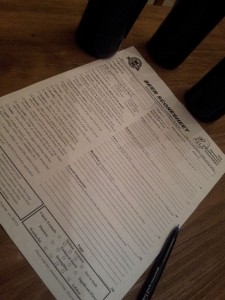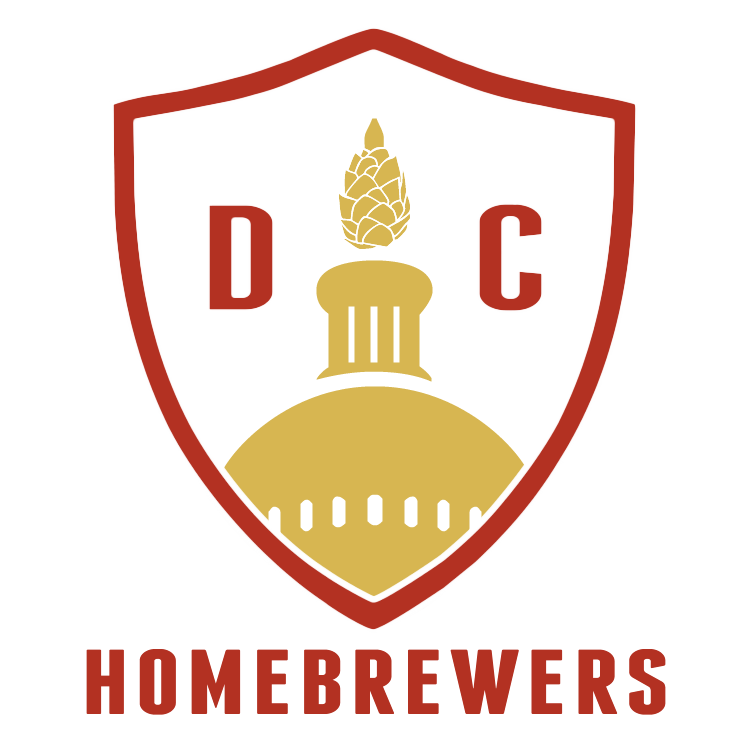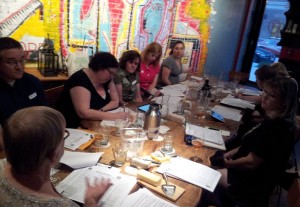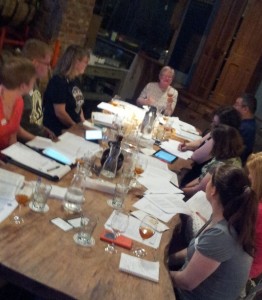So begins the H.O.P.S. BJCP study session! First, let’s learn about evaluating beers, the BJCP judging process, and the certification exam. To guide your own discussion on these topics, read How to Judge Beer for a quick primer on what’s involved. Also reference chapters I – III in the BJCP Exam Study Guide.
Below are notes from our discussion. A big thanks to our speaker, Jamie Langlie, our host, Right Proper Brewing Company, and to those who provided the beer, Sara Bondioli and Erich Streckfuss!
Guest Speaker: Jamie Langlie (member of BURP and H.O.P.S., and the mastermind behind the class curriculum and speaker schedule).
About beer judging (Chapter I and Chapter II, section B)
- Descriptions: Judging is communicating about beer, so it’s important to know the vocabulary. Be descriptive and objective when describing the beer and avoid speculating (e.g., whether extract was used, how it was brewed, etc.).
- Environment: The judging environment is also important. Judges need to be able to concentrate, effectively assess beers, and write their thoughts. When choosing a judging space, allow room for beers and paperwork. Avoid disrupting or harsh smells (e.g., food, cleaning supplies, perfumes, etc.).
- Tasting: Unlike judging wine, it’s important for beer judges to actually drink the beer (versus spit it out) in order to assess the full flavor. The flavors of beer open up throughout different parts of the mouth.
About BJCP and the certification process (Chapter II, sections C and D, and Chapter III)
- The program: The Beer Judge Certification Program (BJCP) was designed by the American Homebrewers Association to encourage understanding and appreciation of different beer styles, promote and advance beer evaluation, and develop standardized tools and processes around evaluation. For more specific information and links to resources, visit the BJCP website and the BJCP Exam Center.
- Certification process: The certification process begins with an online exam followed by a tasting exam. Some judges may eventually take a written exam, too. This study group is designed to prepare participants for the initial online exam.
- Rankings: Judge rankings range from apprentice through grand master. Judges advance by taking exams and earning points through experience judging.
About BJCP scoresheets
 Scoresheet: Familiarize yourself with the BJCP Scoresheet and it’s different categories. See Judges Instructions for more detailed information on how to complete scoresheets.
Scoresheet: Familiarize yourself with the BJCP Scoresheet and it’s different categories. See Judges Instructions for more detailed information on how to complete scoresheets.- Assessment: Judges objectively describe different attributes of the beer – Aroma, Appearance, Flavor, Mouthfeel. As “Overall Impression” judges may indicate their opinion of the beer (e.g., Was it good? Was it true to style? Where could it use work? etc.)
- Descriptor Definitions: These check boxes are cues for judges to reference as they describe the beers. Judges should check any descriptor they use in their assessment.
- Feedback: When completing scoresheets, it’s important to remain courteous, not snarky. Most brewers genuinely hope to improve their craft. Helpful and courteous feedback allows them to do that. Also, judging is not done anonymously. Brewers will receive the scoresheets with the judges’ names.
- Scores: There are 2 ways to formulate a score – come up with an overall score and then justify it with the scores for each category, or assign a score for each session and add it up to determine the overall score. Scores typically range between 25-42. Judges on a team should be within 5 points of each other for the total score.
Practice
Throughout your discussion about the beer judging process, taste a range of beers and talk briefly about the attributes of each using the categories on the scoresheet as a guide for your discussion. We served the following beers as examples of specific styles:
- Right Proper – Haxen (robust porter)
- Firestone Walker – Union Jack (IPA)
- Right Proper – Ornette (saison)
- Atlas Brewing – District Common (California Common)
Homework
- Drink consciously; note the attributes of the beers you’re drinking – aroma, appearance, flavor, mouthfeel, overall impression
- Review the BJCP Scoresheet and Judges Instructions
- Study the vocabulary that’s used to describe beers (reference the BJCP Style Guidelines, read reviews, talk to fellow beer nerds, etc.)
- Prepare for the next session
Next Session – What You’ll Need
Session 2: Malts (samples of ambers and dark lagers)
- Samples of beers from categories 3, 4, 5 in the BJCP Style Guidelines
- Samples of different malts (1 oz. should be enough); we recommend Munich, Crystal, Biscuit, Chocolate, rye, wheat
- Scoresheets
- Read BJCP Exam Study Guide Chapter IV, section B (Malts)
- Your study/drinking buddies
Return to the series overview


